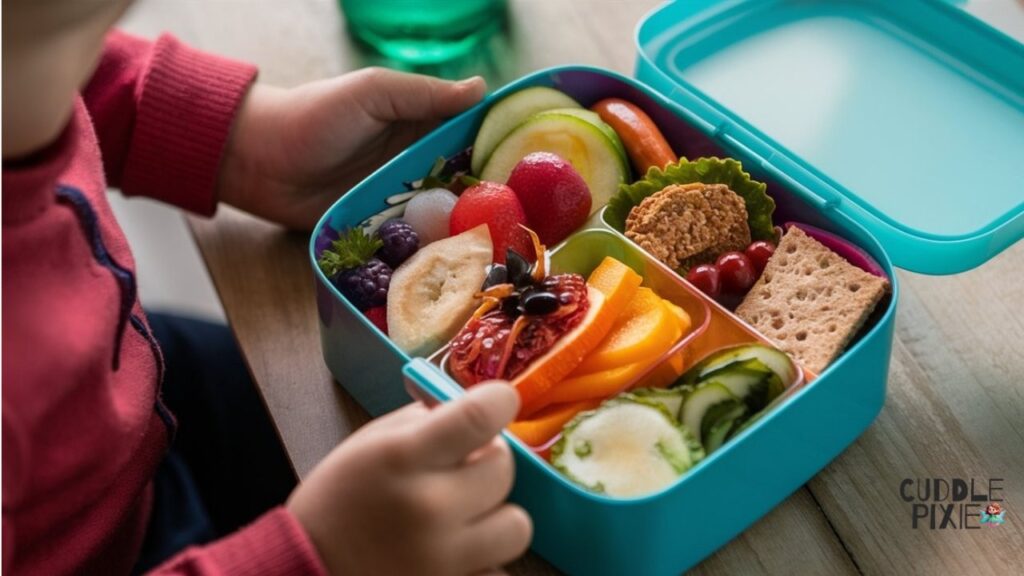As parents, one of our most important jobs is to make sure our kids grow up healthy and strong. A big part of this is helping them develop good eating habits. But with all the fast food and sugary snacks out there, it can be a challenge. Don’t worry, though! By following some simple tips, you can guide your kids toward healthy eating and enjoying nutritious foods.
In This Article
Why Healthy Eating is Important
Healthy eating is crucial for kids because it helps them grow and develop properly. It also gives them the energy they need to play, learn, and stay active. Good nutrition can prevent many health problems, such as obesity, diabetes, and heart disease. Plus, kids who eat well are more likely to continue these habits as adults.
Understanding Nutrition Basics
Before we explore the tips, let’s cover some basics about nutrition. Our bodies need a variety of nutrients to function well, including:

- Proteins: Essential for growth and repair of tissues. Found in meat, fish, eggs, beans, and nuts.
- Carbohydrates: Provide energy. Found in bread, rice, pasta, fruits, and vegetables.
- Fats: Important for brain development and energy. Found in oils, butter, avocados, and nuts.
- Vitamins and Minerals: Needed for various body functions. Found in fruits, vegetables, dairy, and whole grains.
- Water: Vital for all bodily functions. Keeps us hydrated and helps with digestion.
Tips for Healthy Eating Habits
-
Make a Plan
It is crucial to plan for meals and snacks to make sure your children are receiving adequate nutrients. It is also important to try and incorporate a balance of the various food groups in each meal. For instance, the first meal could be whole grain cereal with milk and a banana, and the second meal could be a turkey sandwich with carrot sticks and an apple. -
Be a Role Model
Children are observers and they usually mimic what they see their parents do. If they observe you engaging in such eating habits and having fun with it, then they will be prompted to do the same. There are several things that you can do for your child: Try to sit down and eat meals together as a family as much as possible. -
Provide several foods to choose
Try to feed your children different fruits, vegetables, whole grain products, and protein foods to make them familiar with them. This also has the added advantage of ensuring that the child gets to take several different foods and also helps to build up their preference for healthy foods. Do not be discouraged if they reject something; sometimes people need to be introduced to something several times before they develop a liking for it. -
Make Healthy Foods Fun
It is important to ensure that one makes the healthy eating process more fun by coming up with several ideas. For example, you can arrange fruits and vegetables in the form of a smiley face on a plate, or cut sandwiches into shapes using cookie cutters. You can also get your children involved in the process of preparing food. They are more likely to take food that they have prepared by themselves. -
No More Sweetened Beverages and Treats
It is easy to get hooked on soft drinks, candies, and other sweets, but these foods are not very healthy for you. Sodas, juices, and candies should be consumed in moderation if at all possible. Instead, provide water, milk, or 1-ounce servings of 100% fruit juice. For snacks, it is advised to take fruits, nuts, yogurt or cheese. -
Serve Smaller Portions
Children may require less food intake than the adults in the family. Begin with small portions and make them request more if they still want to eat more food. This can assist in avoiding overeating and instruct them to pay attention to their hunger signals. -
Promoting Meal Intake and Snacking
Breakfast, lunch, and snacks provide children with the nutrients they need to function at their best during the day. Ensure that you take three meals in a day and two snacks in between the meals. This is not advisable as it leads to overeating due to hunger at other times of the day, therefore it is advised to eat at regular intervals. -
Why You Should Not Get Angry with a Child Who Is Selective in What He Eats
Children tend to be fussy with the food they consume at one point in time. Rather than make them consume the food, persuade them to taste at least one mouthful. If they don’t like it, they shouldn’t have made a big issue out of it. Just keep presenting them with different types of food, and one day they might change their minds. -
Teach About Nutrition
Teach your children the importance of healthy eating habits, so that they can apply them throughout their lives. In simple terms, tell how the different foods benefit their bodies. For instance, one may inform the child that carrots aid in improving their vision or that milk is good for their bones. This can help them make healthy eating more interesting and, therefore, more likely to try it out. -
Stay Positive
Focus on the positive aspects of healthy eating rather than what they shouldn’t eat. Praise your kids when they make healthy choices. Creating a positive atmosphere around food can help them develop a healthy relationship with eating.
Practical Ideas for Meals and Snacks

Here are some easy and healthy meal and snack ideas that you can try with your kids:
Breakfast
- Whole-grain toast with peanut butter and sliced bananas
- Oatmeal topped with berries and a drizzle of honey
- Smoothie made with yogurt, spinach, and mixed fruits
Lunch
- Turkey and cheese roll-ups with whole-grain crackers and cucumber slices
- Vegetable soup with a side of whole-grain bread
- Grilled chicken salad with a variety of colorful veggies
Dinner
- Baked fish with quinoa and steamed broccoli
- Stir-fried tofu with brown rice and mixed vegetables
- Spaghetti with whole-grain noodles, lean meat sauce, and a side salad
Snacks
- Apple slices with almond butter
- Carrot sticks with hummus
- Yogurt with a sprinkle of granola and fresh berries
Getting Kids Involved
Getting kids involved in their meals can make them more excited about eating healthy. Here are some ways to do that:

- Grocery Shopping: Let them help pick out fruits and vegetables at the store. They can choose new things to try.
- Cooking: Involve them in age-appropriate cooking tasks. Younger kids can wash vegetables, while older ones can help with mixing and measuring.
- Gardening: If possible, grow some vegetables or herbs at home. Kids are often more willing to eat something they helped grow.
Handling Special Situations
Sometimes, special situations like parties, holidays, or eating out can make healthy eating challenging. Here are some tips for those times:
- Parties and Holidays: Focus on enjoying the occasion rather than worrying too much about the food. Offer to bring a healthy dish, and encourage your kids to enjoy treats in moderation.
- Eating Out: Look for healthier options on the menu, such as grilled instead of fried foods. Choose water or milk instead of sugary drinks, and share dishes if portions are large.
- Travel: Pack healthy snacks like fruits, nuts, and whole-grain crackers for trips. This can help avoid the temptation of less healthy options.
The Path to Lifelong Healthy Eating
It is very important to help your children learn how to eat healthy foods that are beneficial for the growth and development of their bodies. In this way, it is possible to turn healthy foods into a game and get your children involved in the process of eating well. Please remember that no one is perfect and that is completely okay. However, it is important to pick the healthier option when given various choices and to build a good relationship with food.
Moreover, you should encourage children to eat nutritious foods. It can help them avoid diseases now and, in the future, thus it prepares them for a healthy lifestyle. There are several ways to help such as planning meals, providing a selection of foods, and modeling the behavior.

You should however encourage children to take new foods in their diet but be tolerant of those who are not easily convinced to eat new meals. Ensure that you make the meal time as enjoyable as possible and don’t force them to eat. Rather, it is the process of learning and discovery. Compliment them for their choice and ensure that you maintain a positive tone in the conversation.
It is recommended that children should be included during shopping for food, preparing the food, or even planting crops in the compound if there are any. The following activities will make them more enthusiastic about eating healthy foods. On occasions such as parties or while eating out, one should attempt to make the healthiest choices possible without being too rigid.
Remember, it takes some time to build up a good habit and that is why you should not be discouraged if it is slow at first. The key message here is that with determination and love, it is possible to steer children towards a healthy and happy future.
So, in the end, teaching your children how to eat is one of the best things you can do for them. It is a way of making them healthy, and happy and improving their quality of life in general. Happy and healthy eating for you and your family!
